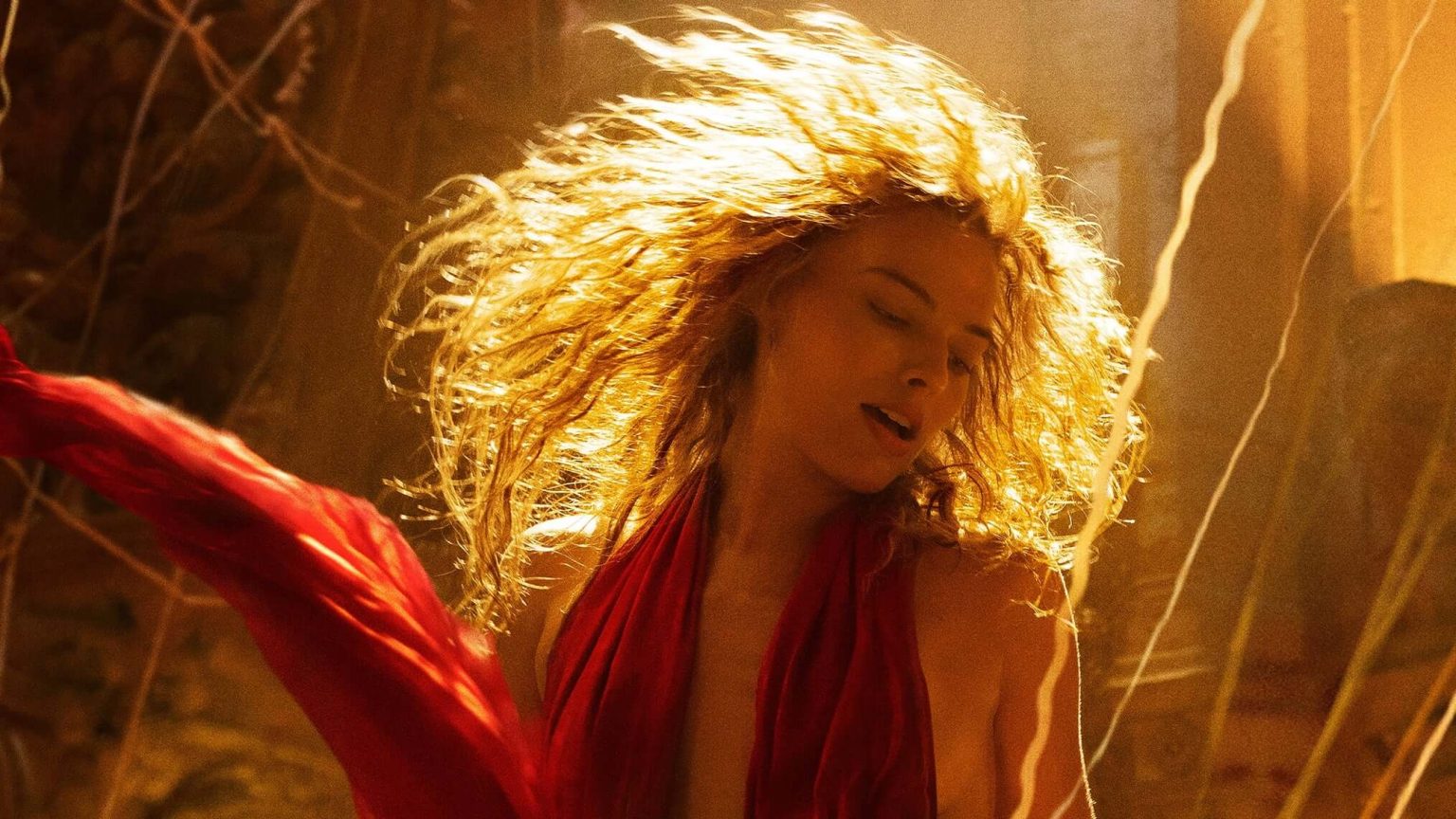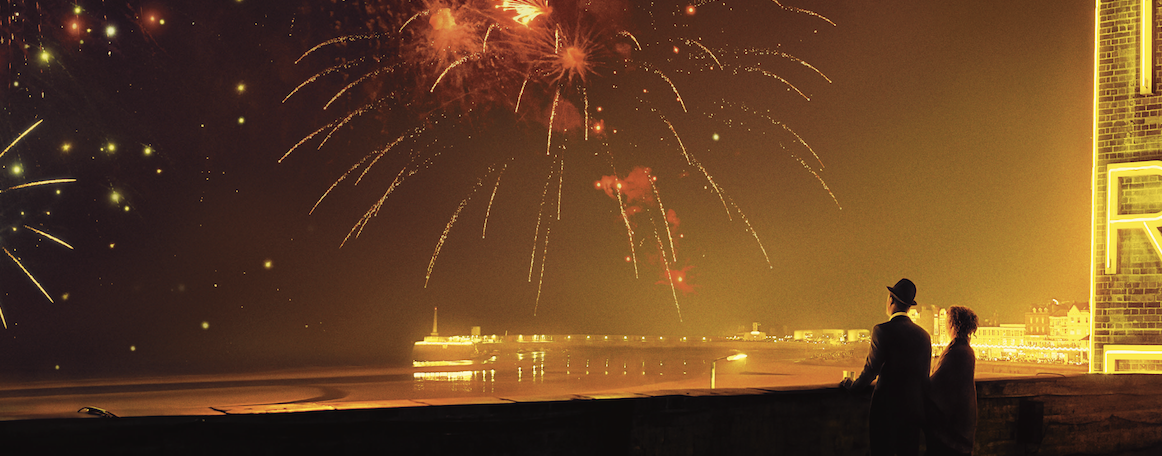This year has seen the release of three very different ‘love-letters’ to cinema. The Fabelmans sees pioneer and veteran of the Hollywood blockbuster, Steven Spielberg, baring his soul as co-writer Tony Kushner pieces together tableaux from Spielberg’s childhood to create a semi-autobiographical project. Mark Kermode once described watching a Spielberg film like sinking into a comfortable leather armchair. Peter Ackroyd called him ‘an extraordinary technician’ whose scenes are ‘as smooth and shiny as lip gloss’. This is the master at work, reminding us just how good he is. The film looks great…it looks gorgeous! From the opening scenes when we see young Sammy Fabelman use his Hanukkah train set to recreate a scene from DeMille’s Greatest Show on Earth (the camera getting down low to follow and witness the terrible toy crash from every angle), through to the final shot of an adult Sammy walking into a hopeful and unknown horizon, Janusz Kamiński’s cinematography and Spielberg’s direction are superb.
In spite of the two and a half hour runtime the film never drags. Every set piece arrives, does its turn, and gives way to the next elegantly. We follow young Sammy and his family as they start in New Jersey and then move home, first to Arizona and then to California. Young Sammy discovers an all-encompassing passion for filmmaking which helps him deal with the many moves and upheavals that come his way.
'The man is able to communicate the fullness of the interior life of any character in a single breath.'
The script is warm and funny and plays the audience like a fiddle - but what else would you expect? The cast all seem delighted to be there. Michelle Williams is wild and ‘artsy’ without ever hamming it up. The young stars turn in solid performances, and Judd Hirsch and David Lynch drop by to chew some scenery and remind us what old-fashioned star power is. However, despite everyone being on top form, Paul Dano takes the day. His face permanently set in a creased expression that is both serious and loving, his entire posture giving a warm glow of empathy, his very breathing draws you into his world and his cares…I’m not joking. Within the last year I have heard Dano exhale as the psychotic Riddler in The Batman and as a heart-broken father and husband in The Fabelmans - the man is able to communicate the fullness of the interior life of any character in a single breath.
All that being said, ‘smooth and shiny’ really sums up the film. It's good looking and entertaining, but forgettable and lacking substance. Hirsch gives an Oscar-baiting speech about obsession and creativity and the battle between art and family, and there is horrific depiction of antisemitism…but these moments just sit in the middle of the film like little islands of profundity.
What this is, is the master-craftsman indulging himself in style. And you know what? Fair play. You should go and see the film. Go and see one of the makers of modern cinema do his thing. It’s a little empty and self-indulgent, but hey…this is the director of Jaws, E.T., Raiders, Schindler’s List, etc (the list goes on and on), he gets to do this; he’s earned it!
3.5 stars
Babylon

Smooth and shiny are also apt words to apply to Damien Chazelle’s Babylon. Others are putrid, dull, and loathsome. In Babylon we are transported to another world, where Hollywood is on the brink of talking-pictures, a party isn’t a party without drugs and sex and elephant dung, and where everyone is a moral vacuum sucking all goodness and beauty into the gaping maw of self-obsession. The film purports to follow Diego Calva’s Manny as he works his way from elephant fondler to studio exec. On the way he falls in love with rising star Nellie LaRoy (she added the ‘La’ herself) and has a brief stint working for Brad Pitt’s leading-man Jack Conrad.
That’s it…that’s all I can say. There’s your summary of three-hours of screen time and three hours of my Saturday night when instead I could have been slowly pulling out my own teeth. The first act or so is a booze-fuelled display of orgiastic excess that wants you to think its self-aware but is really just pornographically gleeful. The middle is a damned slog culminating in a final third which dares to ape (and I don’t care if it intends to, because as far as I’m concerned it does) Boogie Nights (via Dante) - an astronomically superior film which actually has something to say about excess and obsession and corruption and libertinism.
Every now and then it tries to trick you into seeing something of substance - Jean Smart’s gossip columnist delivers a diverting if vapid speech about the lasting power of art over human ambition and popularity, and Brad Pitt is constantly shouting about how film is not a low art form and really means something - but don’t be fooled. The film is a nihilistic chasm and by the end I really came to loathe it, which now seems ridiculous because it’s so crashingly boring that it really isn’t worth getting upset about. And if I sound like a young-fogey moralist, the film’s black hole where any sort of conscience or soul should be isn’t its worst crime in my opinion. The film is dull. Don’t waste your time.
1 star
Empire of Light

After the brutal combination of anxiety and boredom in Babylon, Empire of Light came as a welcome restorative - like a cup of tea the morning after. A calm and thoughtful little film, which sees Sam Mendes doing what he does best: being empathetic. From American Beauty right through to 1917, Mendes has yet to direct a film where I don’t feel he cares about his characters. I don’t think he always likes them, but he really knows them and cares about them.
Olivia Coleman’s Hilary is a quiet and reserved woman in middle-age who works in a Margate cinema. She doesn’t seem to have much about her, although we start to see little cracks in the mundane facade: the odd smile, the odd stare, the sudden explosion of jealous anger. There’s a backstory there, but we only have clues. Her life changes when handsome young Stephen is hired. Stephen is outgoing, charming, intelligent, and sensitive. He and Hilary strike up an unlikely romance which helps both characters open up and connect but faces many challenges, from racism (Stephen is black and the far-right are menacing Margate) to failing mental-health.
It’s lovely, but it could have been so much more. It has a sedate pace, and Olivia Colman (when isn’t she excellent!?) does a lot of heavy lifting with Hilary - a character who in lesser hands would have been a caricature but whom Colman presents as nuanced and engaging - but it tries to incorporate too much. It looks at loneliness, it looks at middle age, at a slowly declining coastal town, and at the power of cinema, and racism, and mental health… but only ever a snapshot. A film of such serenity - in no small part due to Roger Deakins’ sumptuous cinematography - can’t afford to have quite so many balls in the air. Empire of Light has too much under its placid surface - perhaps a result of Sam Mendes having sole control of the script. I wanted to grab hold of just one idea and run with it. Still, it is a lovely film. Well worth a watch. Also, Toby Jones…Toby Jones is a reason to see any film.
3.5 stars
The loving presentation of the power of cinema
Three very different films united in their loving presentation of the power of cinema - discovering movie-making as a child, being part of the Golden Age of Hollywood, and the quiet joy of the local seaside cinema. They are united, also, in that each centres around characters searching for meaning. Sammy Fabelman is both traumatised and delighted by cinema at a very young age, and then desperately clings to it as a way to find meaning and solace in a difficult world, unwittingly reconciling and exemplifying his parents’ best qualities (his father’s work-ethic and his mother’s creativity). Manny, Nellie, and Jack are all seeking to define their lives. Jack wants to make a lasting impact on art, Nellie wants to find acceptance, and Manny wants be part of ‘something bigger’. In a much smaller way, Hilary and Stephen find in each other another lost soul looking for answers (Stephen the failed student, and Hilary the failed academic?).
The Fabelmans, Babylon, and Empire of Light all have deeper meaning as a question and cinema as an answer. This is obvious in the first two, but even Empire throws this into the mix with mawkish (but expertly delivered) monologues in which Toby Jones’ projectionist waxes lyrical about the magic of film projection, and how technical skill and hard graft and celluloid and a love of one’s craft are what matters. Towards the end of the film Hilary seems to turn a corner when, for the first time, she watches a full film at work and is enchanted and delighted.
A hunger for meaning
All three films lay bare a fundamental truth about the human condition. We are all searching for ‘meaning’, ‘solidity’, ‘truth’ on which we can rely and around which we can build our lives. We live in a culture which more and more suggests that there is no objective truth or meaning, and so this hunger for ‘meaning’ gives us the opportunity to define our lives ourselves and create our own truth and our own meaning of life. All three films also demonstrate just how damaging this can be.
In Babylon it’s obvious; characters create their own meaning and it ends in suicide, drug-overdose, and a figurative descent through the circles of hell (where people still know how to party!?) and exile. The film tries to end with the suggestion that all this pain and suffering in some way led to the brilliance of Singing in the Rain… It didn’t. Empire’s empathy doesn’t stop it from raising some uncomfortable questions. Hilary’s search for meaningful experience with Stephen could be seen as grooming and coercion, and an abuse of power. Toby Jones’ monologues are delivered all while we see a photo of his tragically estranged son in the background. Sammy Fabelman finds solace and meaning in film, while being tremendously self-involved to the point where his sister has to chastise him for his selfishness.
All human beings feel this urge to find definition and meaning. Our cinematic offerings seem to view it as a bug, Christianity knows it as a feature. They see it as a challenge to be overcome, Christianity knows it to be a gift. It is through this longing for meaning - for something more than ourselves - that we can know something of God. St Augustine summed it up beautifully when he confessed of the human condition that ‘our hearts are restless till they rest in thee’. As we long for meaning, we are invited to find it, not create it.
We are invited by Jesus Christ into something bigger than ourselves. But that bigger thing isn’t something we ‘lose’ ourselves in; we ‘find’ ourselves in the bigger reality of God, and as we find our restless hearts coming to peace in God we truly begin to see the world around us and our place in it.





